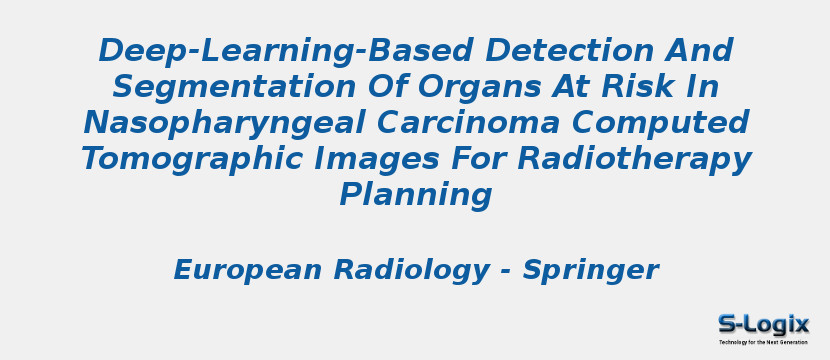Research Area: Machine Learning
Accurate detection and segmentation of organs at risks (OARs) in CT image is the key step for efficient planning of radiation therapy for nasopharyngeal carcinoma (NPC) treatment. We develop a fully automated deep-learning-based method (termed organs-at-risk detection and segmentation network (ODS net)) on CT images and investigate ODS net performance in automated detection and segmentation of OARs.The ODS net consists of two convolutional neural networks (CNNs). The first CNN proposes organ bounding boxes along with their scores, and then a second CNN utilizes the proposed bounding boxes to predict segmentation masks for each organ. A total of 185 subjects were included in this study for statistical comparison. Sensitivity and specificity were performed to determine the performance of the detection and the Dice coefficient was used to quantitatively measure the overlap between automated segmentation results and manual segmentation. Paired samples t tests and analysis of variance were employed for statistical analysis.ODS net provides an accurate detection result with a sensitivity of 0.997 to 1 for most organs and a specificity of 0.983 to 0.999. Furthermore, segmentation results from ODS net correlated strongly with manual segmentation with a Dice coefficient of more than 0.85 in most organs. A significantly higher Dice coefficient for all organs together (p = 0.0003 < 0.01) was obtained in ODS net (0.861 ± 0.07) than in fully convolutional neural network (FCN) (0.8 ± 0.07). The Dice coefficients of each OAR did not differ significantly between different T-staging patients.The ODS net yielded accurate automated detection and segmentation of OARs in CT images and thereby may improve and facilitate radiotherapy planning for NPC.
Keywords:
Author(s) Name: Shujun Liang, Fan Tang, Xia Huang, Kaifan Yang, Tao Zhong, Runyue Hu, Shangqing Liu, Xinrui Yuan & Yu Zhang
Journal name: European Radiology
Conferrence name:
Publisher name: Springer
DOI: 10.1007/s00330-018-5748-9
Volume Information: volume 29, pages:1961–1967 (2019)
